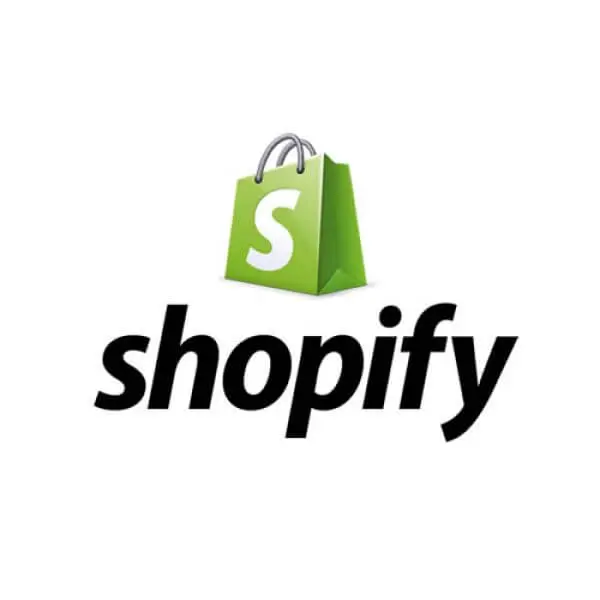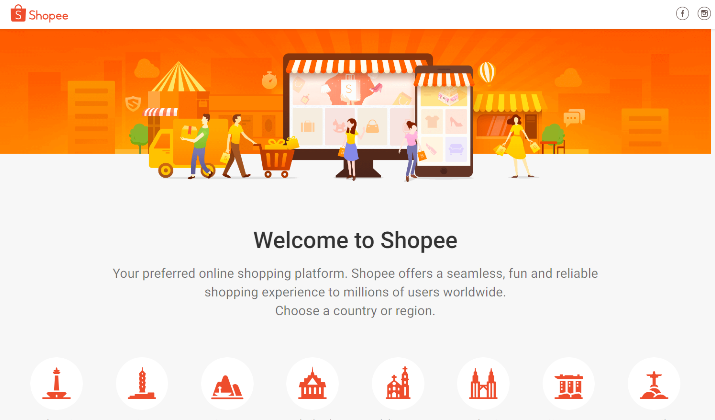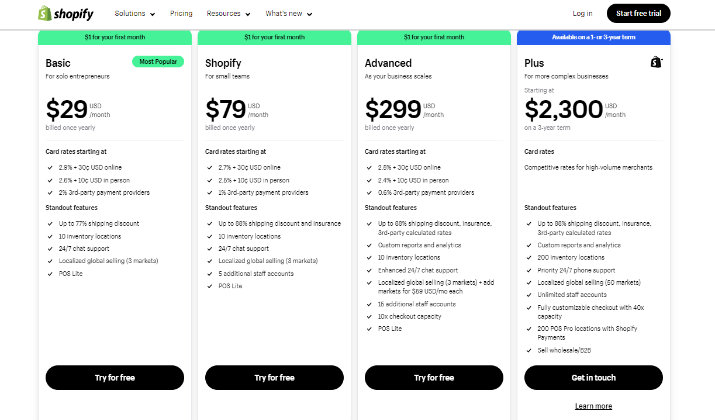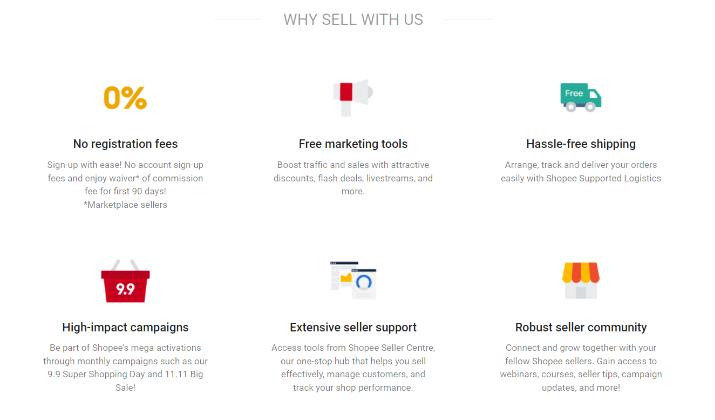As an online business owner, choosing the right ecommerce platform is crucial for your success.
Today, we are going to compare two popular platforms that can help you take your business to the next level: Shopify and Shopee.
But here’s the burning question: Which platform is better for your online business?
Many people have different opinions on this matter, so it’s time to dive deep and explore the strengths and weaknesses of each platform.
By the end of the article, you’ll have a clear understanding of which platform aligns with your business goals and needs.
But first, let’s take a sneak peek at the two platforms.
Overview
Shopify
Shopify is an ecommerce platform that allows you to build your own website and sell products online.
It is widely recognized and trusted by leading brands such as Raycon, Gymshark, and Allbirds. In fact, more than 4.5 million online stores depend on Shopify for their ecommerce needs.
With Shopify, you have the power to customize your website and create a unique online shopping experience for your customers.
The platform offers a comprehensive suite of features and tools that enable businesses to start, grow, and efficiently manage their online stores.
Whether you’re just starting out or already an established brand, Shopify provides the flexibility and scalability you need.
It offers a wide range of templates and themes to choose from, allowing you to create a visually stunning and user-friendly ecommerce website tailored to your brand’s identity.
Shopify’s robust inventory management system ensures that you can easily keep track of your products, update stock levels, and manage fulfillment.
The platform also supports various payment gateways, making it convenient for customers to complete transactions securely and efficiently.
Furthermore, Shopify provides valuable tools for search engine optimization (SEO), helping to improve your website’s visibility and attract more organic traffic.
With its seamless integration of marketing tools and analytics, you can gain insights into your customers’ behaviors and preferences, enabling you to optimize your marketing strategies.
With its extensive features, user-friendly interface, and integration capabilities, Shopify remains at the forefront of ecommerce solutions, serving millions of online stores worldwide.
Also read: Shopify vs Wix – Which Is Better?
Try Shopify free followed by first month at just $1. No credit card required. Limited Time Offer.
Shopee
Shopee is an online marketplace that functions as an ecommerce platform connecting buyers with sellers. It has established itself as a leading online marketplace in Southeast Asia, Taiwan, Brazil, and other regions.
As an online marketplace, Shopee offers a wide range of products from various sellers, providing consumers with a diverse selection to choose from.
One of the key advantages of Shopee is its integrated payments system, which allows for convenient and secure transactions between buyers and sellers.
The feature ensures a seamless and efficient shopping experience for both parties involved. Additionally, Shopee prioritizes fast ecommerce, making sure that online transactions are processed and delivered promptly.
By offering a user-friendly interface and easy-to-use selling tools, Shopee has become a popular choice for individuals and businesses looking to enter the online marketplace.
Its integrated order fulfillment options and reliable logistics partners ensure that sellers can efficiently manage their inventory and deliver products to customers.
Shopee’s Presence in Southeast Asia
Shopee’s success in the online marketplace space is particularly prominent in Southeast Asia.
With its presence in multiple countries within the region, Shopee has established strong relationships with local sellers and buyers.
This allows for a comprehensive selection of products ranging from fashion and electronics to household items.
As an online marketplace, Shopee caters to the needs of both individual sellers and established businesses. Individuals can easily sell their handmade crafts or pre-loved items, while larger brands can leverage the platform to reach a wider customer base.
This variety of sellers ensures that there is something for everyone on Shopee, making it a go-to online shopping destination.
Check out: Shopify vs Prestashop
Customization Options
Shopify
Shopify provides extensive customization capabilities for merchants to create customizable products in their stores. Here are some key points:
- Shopify has several apps available in the App Store that enable advanced product customization, such as the Product Options & Customizer app. These apps allow merchants to add custom fields, file uploads, color/texture preferences, and more for customers to personalize products.
- Merchants can also create customizable products directly in Shopify without using an app, by editing the theme code and adding custom product templates and sections. This allows adding custom form fields, buttons, and other functionality.
- Shopify’s Metafields feature provides a way to add custom data and design elements to products, collections, and pages beyond the default fields, giving merchants flexibility to create unique customization experiences.
- While Shopify has a 100 variant limit per product, there are ways to exceed this constraint through custom code5 for merchants with highly configurable products.
- Shopify also allows customizing the checkout experience, such as adding payment gateways, account creation options, and other branding elements to streamline the purchase flow for customized products.
Shopify offers robust customization capabilities, both through apps and direct theme editing, to enable merchants to create unique, personalized product experiences for their customers.
Explore: Ecwid vs BigCommerce
Try Shopify free followed by first month at just $1. No credit card required. Limited Time Offer.
Shopee
With a Shopee store, you get the following benefits:
- Customizing the Shopee storefront design and layout: This enables you to brand the store with a consistent color palette, logo placement, and imagery style. It also allows optimizing the user interface for seamless navigation, such as intuitive category organization. Plus, you can utilize Shopee’s theme customization tools to create a visually appealing and on-brand storefront.
- Personalizing the shopping experience: The platform offers an option to customize shopper profiles (e.g. “Browser” and “Bargain Hunter”) to cater to different shopping habits. This allows users to customize the homepage layout, such as rearranging banners and icons.
- Showcasing products and promotions: You may use the Product List component to highlight specific products, such as new arrivals or best-sellers. This also allows displaying ongoing voucher promotions to shoppers using the Voucher component.
- Communicating with customers: Sellers can use the Text component to share the store’s brand story, philosophy, or other information. This option also helps promote the store and its custom pages through Shopee’s in-app marketing tools and social media.
Shopee’s personalization goes beyond just aesthetics; it’s about creating an immersive and tailored shopping experience that resonates with the target audience and drives engagement and sales.
Read this too: Does Ecwid Work With Webflow?
Beginner-friendly Features
Shopify
When it comes to building and managing your online store, Shopify offers a comprehensive set of features and tools to help you succeed.
From inventory management to search engine optimization (SEO), Shopify has got you covered. With its easy-to-use interface and intuitive design, you can create a professional-looking ecommerce website in no time.
One of the key features of Shopify is its support for various payment gateways, allowing you to offer your customers a seamless and secure checkout experience.
Whether you prefer PayPal, Stripe, or any other popular payment provider, Shopify integrates them all, ensuring that you can accept payments from your customers without any hassle.
It’s important to note that there may be additional costs for using external payment gateways. These costs are typically nominal and vary depending on the payment provider you choose.
However, one of the advantages of using Shopify is that there is no transaction fee charged by the platform itself.
To recap, Shopify provides a robust set of features to help you build, manage, and grow your online store.
With its inventory management, SEO tools, and support for various payment gateways, Shopify offers everything you need to create a successful ecommerce website.
Try Shopify free followed by first month at just $1. No credit card required. Limited Time Offer.
Also read: Best Ecwid Alternatives
Shopee
As a seller on Shopee, you can enjoy the convenience of a user-friendly interface that makes it easy to list and sell your products online.
The platform also offers integrated payments, allowing you to receive payments from buyers directly through the marketplace.
With Shopee’s seamless order fulfillment options, you can easily manage and fulfill your orders, ensuring a smooth and efficient selling process.
One of the standout features of Shopee is that it is a free online marketplace. This means that you can list your products and start selling without any upfront costs or subscription fees.
This is particularly beneficial for small businesses and sellers who are just starting and want to minimize their expenses. Shopee’s commitment to being a free platform makes it an attractive choice for many sellers looking to expand their online presence.
However, it’s important to note that Shopee does charge a transaction fee on each sale. The transaction fee varies depending on the product category and your seller status.
This fee is deducted from your earnings, so it’s essential to consider it when pricing your products.
Despite this transaction fee, many sellers still find value in using Shopee due to its large user base and the potential for high sales volume.
Check out: Shopify vs Shoptet – Which Is Better?
Key Differences
When comparing Shopify and Shopee, it becomes evident that there are significant differences in terms of brand building opportunities.
Shopify offers businesses the opportunity to create a distinct brand identity.
With the ability to design your store as per your brand’s aesthetics and values, you can cultivate a strong brand image and resonate with your target audience.
This association with a well-defined brand enhances customer trust and loyalty.
On the other hand, Shopee’s focus is primarily on creating a platform for sellers to connect with buyers, making it more suitable for businesses that want to focus on selling products without investing heavily in brand building.
Explore: Is Shopify Good For Dropshipping?
Pricing
Shopify
Shopify offers different pricing plans designed to cater to the needs of diverse businesses:
- Basic Plan: Priced at $39 per month ($29 if paid annually), this plan is ideal for for solo entrepreneurs. It supports a fully functional website and blog, fraud analysis tool, unlimited product uploads, manual order creation and 24/7 customer support.
- Shopify Plan: This plan priced at $105 per month ($79 if paid annually) is suitable for small teams. It provides unlimited product listings and powerful functionalities for growing your business.
- Advanced Plan: Tailored for large businesses, this plan is priced at $399 per month ($299 if billed annually). It offers customized packaging options, direct communication with Shopify, and support for growing enterprises.
- Plus Plan: If you have an advanced and complex business, this plan priced at $2,300 per month will be a perfect option. It offers fully customized packaging, direct communication with Shopify for customized support and services.
Also read: Exploring Ecwid’s Free Plan
Try Shopify free followed by first month at just $1. No credit card required. Limited Time Offer.
Shopee
Shopee implements a pricing strategy that focuses on offering products at low prices and providing numerous incentives to attract customers, thereby maximizing long-term profit and market share growth.
Shopee utilizes different pricing adjustment strategies, including segmented pricing and promotional pricing.
Segmented pricing involves offering incentives like free shipping and membership rewards to different customer segments, while promotional pricing includes time-limited sales events with high discount values to drive customer engagement and increase sales.
Additionally, Shopee charges sellers various fees, such as transaction fees, marketplace commission fees, and unsuccessful order fees, which are essential components of the overall pricing structure on the platform. However, there are no listing fees involved.
Sellers can optimize their listings to attract more buyers and potentially lower their fees by taking advantage of discount programs and optimizing their selling strategies.
Check out: Shopify vs Gumroad
Shopify vs Shopee: Which Platform to Choose?
When it comes to choosing between Shopify and Shopee, there are several factors to consider, including your business type, growth strategy, and budget.
Both platforms offer unique benefits that cater to different needs, so it’s important to assess your requirements before making a decision.
If you’re looking to build your own brand and have full control over your online store, Shopify is the ideal choice.
With Shopify, you can create a highly customizable ecommerce website that reflects your brand identity. This platform is perfect for businesses that want to invest in their brand and have the resources to do so.
But if you’re looking for a more budget-friendly option and don’t want to start your own brand, Shopee is a suitable choice.
Shopee allows you to list and sell your products without the need to build your own website. The platform is great for businesses with limited resources that still want to reach a wide customer base.
Take the time to assess your needs and consider which platform aligns best with your long-term vision.















